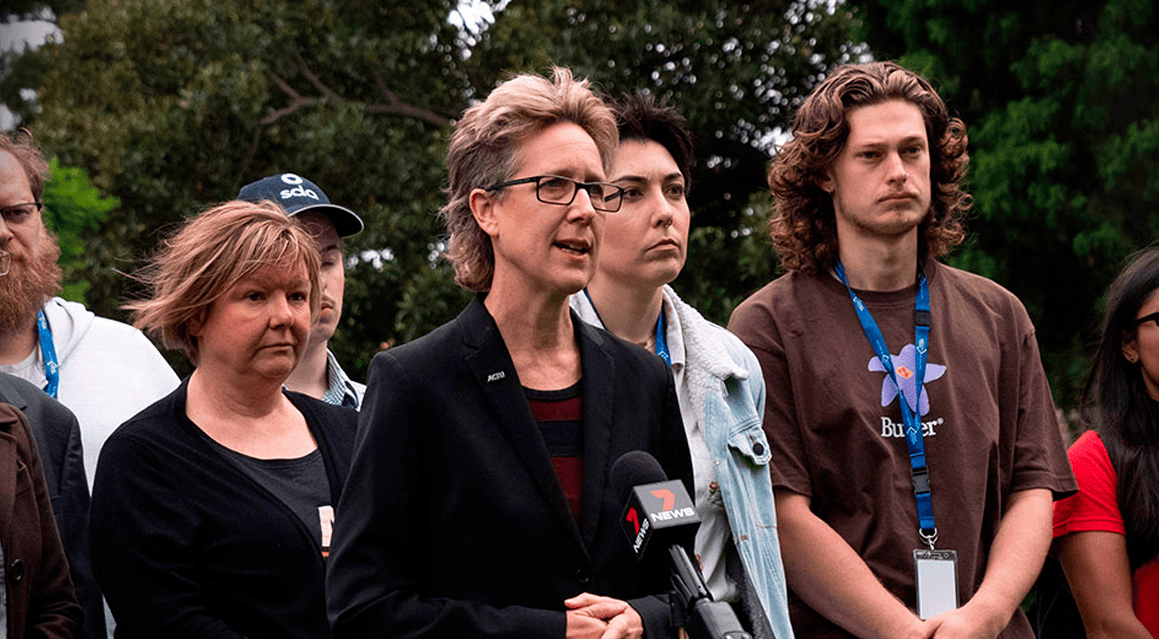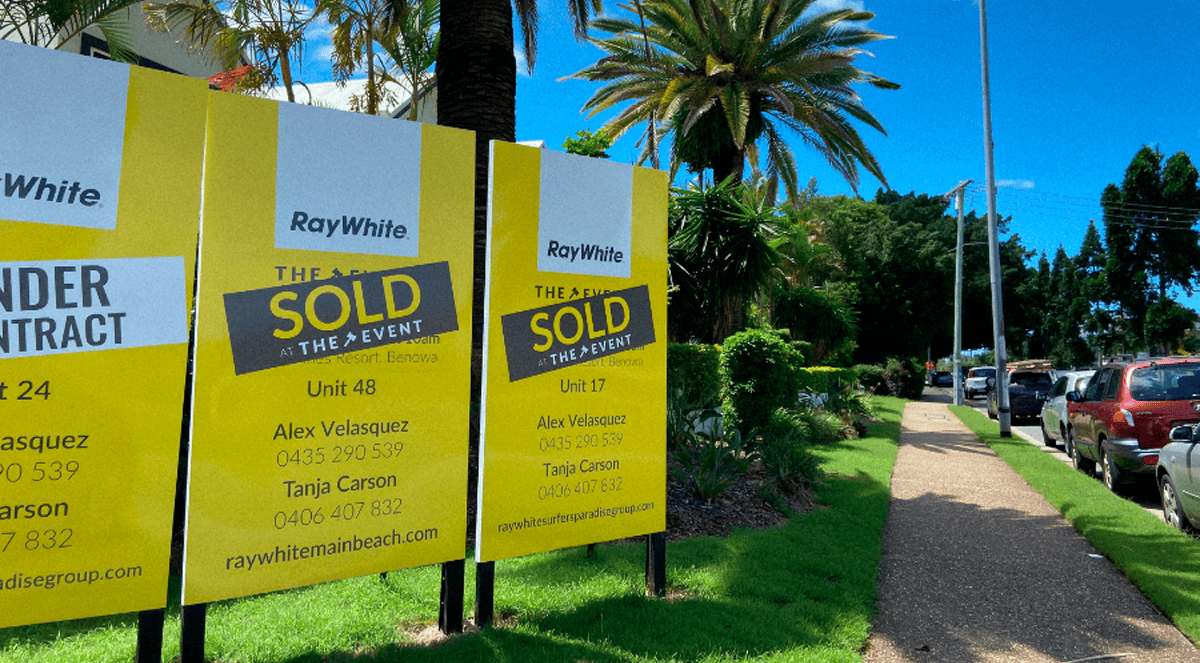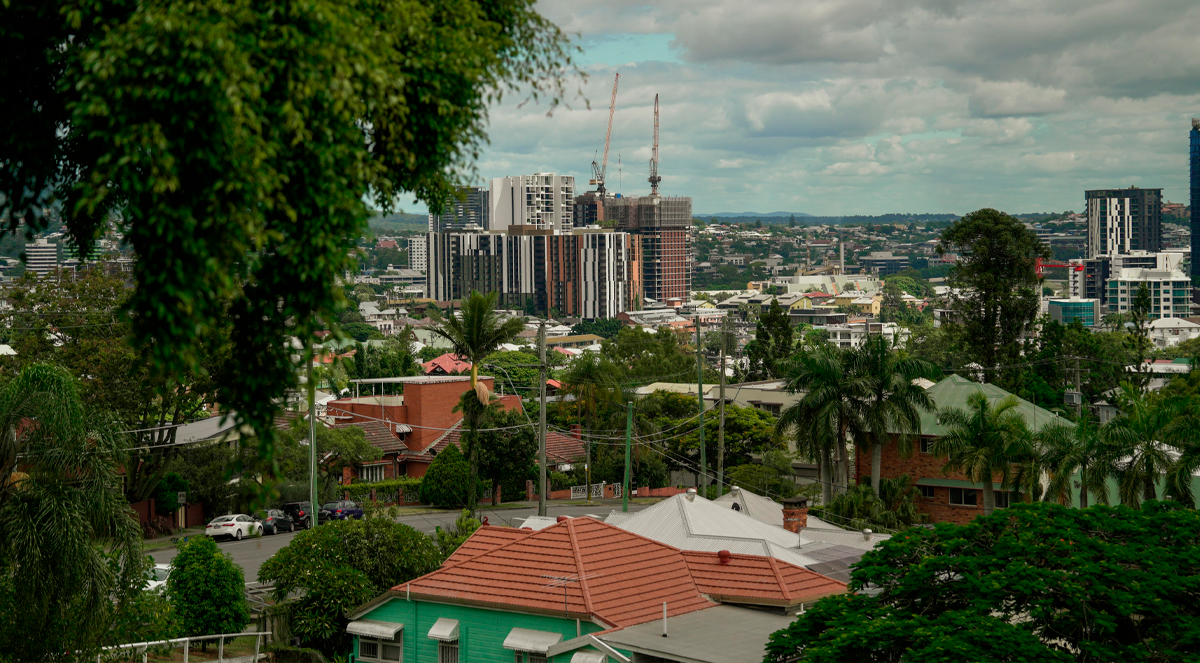Features > Property News & Insights > Market updates
Negative gearing, capital gains tax changes back on the table

Image from actu.org.au
KEY POINTS
- Unions have begun a new push to curb negative gearing and CGT concessions for property investors, aiming to improve housing affordability for young Australians
- The Australian Council of Trade Unions argues tax concessions should apply only to one investment property, warning current rules inflate demand and prices
- However, economists say removing negative gearing would have little price impact, may raise rents, and, per PM Albanese, not boost housing supply
The union movement says it will push for changes to negative gearing and capital gains tax rules for property investors as a way to increase housing affordability in Australia.
Changes to negative gearing and the capital gains tax discount will be one of a suite of tax reform proposals the Australian Council of Trade Unions (ACTU) will take to the Albanese government’s Productivity Summit to be held in Canberra later this month.
However, experts and even the Prime Minister have previously questioned the claimed effect on housing affordability of changes to the investment incentives.
The details
The union movement says working Australians are increasingly being locked out of owning their own homes, while rents are skyrocketing in cities and regions.
The movement’s peak body, the Australian Council of Trade Unions, says the nation’s current tax system incentivises property investment, at the expense of homeowners.
It also claims that property investment is tying up capital that could otherwise be invested more productively.
The Albanese government’s Economic Summit later this month will bring together governments, business and unions to see what can be done to address Australia’s flagging productivity.
The ACTU says it will argue that one key tax change worth adopting is to limit negative gearing and the capital gains tax benefits of housing to just one investment property.
“Otherwise, we’re just saying – too bad young people, you’re not going to be able to ever own a home, forget about even thinking about it,” ACTU Secretary Sally McManus told the ABC’s Insiders program.
“It’s going to continue to get worse unless the government is brave enough to do something about it.
“We are just abandoning those generations and we think that that is fundamentally wrong,” she says.
Ms McManus says housing affordability is the “number one issue facing younger Australians.”
“Young people should have the same aspirations as the generations before them.
“And at the moment, they don’t.
“It’s been wiped out by the fact that the housing prices have gone up twice the rate of wages over the last 25 years.”
Ms Manus admits that increasing housing supply is part of the solution, but she says the tax system needs changes too, as “that has fuelled those housing prices and taken it out of reach for young people.”
Under the ACTU’s proposal, all current negative gearing and capital gains tax arrangements related to housing would be grandfathered for five years, “to give property investors time to adjust to the new single investment property tax limits.”
However, some commentators have raised the prospect of these changes forcing a massive sell-off of investment properties.
The ACTU’s housing proposals also call for more use of modular housing materials, which the union movement says “can be quicker and cheaper than using conventional building materials”.
It also wants changes to the rules governing superannuation funds, freeing them up to invest in housing.
Let’s get real
The simple fact is that while the union movement's ideas may appeal to some of its base, the Albanese government is unlikely to consider changes to negative gearing or the capital gains tax discount.
Rightly or wrongly, Labor leader Bill Shorten is perceived to have lost the 2016 and 2019 elections to Liberal Prime Ministers Malcolm Turnbull and Scott Morrison because of policies which would have limited negative gearing for investors to newly built properties only and halved the capital gains tax discount.
Anthony Albanese is unlikely to be drawn into a fight against vested interests in the building, property and investment industries over negative gearing.
In fact, he’s been quite clear.
“It’s (winding back negative gearing) been shown that it won’t assist supply, and that’s the problem here,” Mr Albanese said last year.
“For many people, of course, if you didn’t have investment in housing, you wouldn’t have private rentals, you would have less supply, and less construction is the concern, which is there.”
It’s also worth noting that while the Labor Party did emerge from the union movement and continues to have close links with it, union membership in Australia has plummeted over the past three decades, a factor that has diluted the movement’s policy-making clout.
ABS figures show that in August last year, 13.1% of Australian workers were union members, down from 40% in 1992.
The evidence
The Prime Minister is right that winding back negative gearing won’t assist with supply.
But reading between the lines on the union movement’s pronouncements on negative gearing, it seems their leadership is hoping that investors pulling out of housing would see a lot more existing properties on the market, helping to dampen the rapid home price growth we’ve seen since 2000.
There are a couple of problems with this.
The first is that Reserve Bank of Australia figures show around 70% of investors own just one property.
They are unlikely to sell up as they would not be affected by the ACTU’s proposed one-property exemption.
There’s also the possibility that investors with more than one property would also simply use the five-year “grandfather” period to restructure their portfolios.
So if they have three properties, they might restructure their loans - and possibly their rents - so that two of the investments were basically neutral or paying for themselves, while larger losses are confined to the one property they are still allowed to negatively gear.
The effect of removing negative gearing on housing affordability is also questionable.
Former central banker Peter Tulip is now the Chief Economist at the Centre for Independent Studies and has reviewed several detailed studies which model the effects of removing negative gearing.
“There are repeated claims that negative gearing makes housing expensive,” he says.
“These claims are refuted by well-known research.”
In fact, he says, “several studies using different approaches estimate that the effect (of removing negative gearing on Australian house prices) would be trivial”.
Of these studies, Peter Tulip says the most detailed study is by Cho, Li, and Uren (2021), who find that removing negative gearing would increase home ownership by 4.3%, but reduce house prices by only 1.5%.
However, it would also raise rents by 3.6% and, in an alarming finding, the Federal government would have to increase the welfare budget by 1.7% to offset costs like higher rents for low-income earners.
Modular homes
Claims about modular homes being a solution to the current housing crisis are also overblown.
Modular buildings may be great for crisis accommodation for the homeless, temporary student digs, a home office in someone’s backyard or on a building site, or as on-site accommodation at a caravan park, but most Australians I encounter don’t want to live permanently in modular housing.
Despite politicians telling us we need more urban in-fill, most Australians also don’t want to live permanently and raise a family in apartments.
They want a proper brick or timber free-standing house on a block of land where their kids can play or they can keep a pet.
Despite the current housing crisis and the difficulty of getting into the housing market, most young people still aspire to “the Australian dream”.
Stay Up to Date
with the Latest Australian Property News, Insights & Education.




.png?width=292&height=292&name=Copy%20Link%20(1).png)
 SIGN UP FOR FREE NEWSLETTER
SIGN UP FOR FREE NEWSLETTER





.jpg?width=1920&height=1080&name=Warning%2c%20You%20Might%20Be%20Facing%20Higher%20Taxes%20Soon%20(1).jpg)





.png?width=1920&height=1080&name=Rate%20Drops%20Signal%20BIGGEST%20Property%20Boom%20in%20DECADES%20(1).png)

.jpg?width=1920&height=1080&name=Labor%20vs%20Liberal%20These%20Housing%20Policies%20Could%20Change%20the%20Property%20Market%20Forever%20(1).jpg)
.jpg?width=1920&height=1080&name=QLD%20Slashes%20Stamp%20Duty%20Big%20News%20for%20Investors%20%26%20Home%20Buyers%20(1).jpg)
.jpg?width=1920&height=1080&name=Trump%20Just%20Slapped%20Tariffs%20%E2%80%93%20Here%E2%80%99s%20What%20It%20Means%20for%20Australia%20(1).jpg)
.jpg?width=1920&height=1080&name=Federal%20Budget%202025%20More%20Debt%2c%20No%20Housing%20%E2%80%93%20Here%E2%80%99s%20What%20You%20Need%20to%20Know%20(1).jpg)
.jpg?width=1920&height=1080&name=Australias%20Housing%20Crisis%20is%20about%20to%20get%20MUCH%20Worse%20(New%20Data%20Warns).jpg)
%20(1).jpg?width=1920&height=1080&name=Australias%20RENTAL%20CRISIS%20Hits%20ROCK%20BOTTOM!%20(2025%20Update)%20(1).jpg)
%20(1).png?width=1920&height=1080&name=Is%20Adelaide%20Still%20a%20Good%20Property%20Investment%20(2025%20UPDATE)%20(1).png)
.jpg?width=1920&height=1080&name=RBA%20Shocks%20with%20Rate%20Cuts!%20What%E2%80%99s%20Next%20for%20Property%20Investors%20(1).jpg)
%20(1).jpg?width=1920&height=1080&name=I%20Predict%20The%20Feb%20Rate%20Cut%20(My%20Price%20Growth%20Prediction)%20(1).jpg)
.png?width=1920&height=1080&name=Why%20Property%20Prices%20Will%20Rise%20in%202025%20Market%20Predictions%20(1).png)
.jpg?width=1920&height=1080&name=Why%20Investors%20Are%20Choosing%20Apartments%20Over%20Houses%202%20(1).jpg)
.jpg?width=1920&height=1080&name=Why%20Rate%20Cuts%20Will%20Trigger%20A%20Property%20Boom%20(1).jpg)
.jpg?width=1920&height=1080&name=Retire%20On%202Million%20With%20One%20Property%20(Using%20SMSF).jpg)
.jpg?width=1920&height=1080&name=4%20Reasons%20Why%20You%20Should%20Invest%20in%20Melbourne%20Now%20(1).jpg)
%20(1).jpg?width=1920&height=1080&name=Old%20Property%20vs%20New%20Property%20(Facts%20and%20Figures%20Revealed)%20(1).jpg)
%20(1).jpg?width=1920&height=1080&name=Will%20The%20New%20QLD%20Govt%20Create%20a%20Property%20Boom%20or%20Bust%20(My%20Prediction)%20(1).jpg)
%20Scott%20Kuru%20(1).jpg?width=1920&height=1080&name=Inflation%20Hits%20Three-Year%20Low%20(Will%20RBA%20Cut%20Rates%20Soon)%20Scott%20Kuru%20(1).jpg)
.jpg?width=1920&height=1080&name=How%20to%20Buy%20Investment%20Property%20Through%20SMSF_%20The%20Ultimate%20Guide%20(1).jpg)
.jpg?width=1920&height=1080&name=Victoria%20Slashes%20Stamp%20Duty%20Melbourne%20Set%20to%20Boom%20Scott%20Kuru%20(1).jpg)
.png?width=1571&height=861&name=Are%20Foreign%20Buyers%20Really%20Driving%20Up%20Australian%20Property%20Prices%20(1).png)
.jpg?width=1920&height=1080&name=The%20Single%20Factor%20That%20Predicts%20Property%20Growth%20Regions%20(1).jpg)
%20Scott%20Kuru%20(1).jpg?width=1920&height=1080&name=My%20Prediction%20On%20Rates%20%26%20Negative%20Gearing%20(Market%20Crash)%20Scott%20Kuru%20(1).jpg)

-1.png?width=1920&height=1080&name=Major%20Banks%20Cut%20Rates%20Will%20RBA%20Follow%20Suit%20(Sept%20Rate%20Update)-1.png)
%20Scott%20Kuru-1.png?width=1920&height=1080&name=Rate%20Cut%20Coming%20What%20New%20Zealands%20Move%20Means%20for%20Australia%20(Sept%20Prediction)%20Scott%20Kuru-1.png)
%20(1).jpg?width=1920&height=1080&name=Buy%20when%20the%20interest%20rates%20are%20high!%20(Why%20you%20must%20buy%20now!)%20(1).jpg)
.jpg?width=1920&height=1080&name=Carms_Revised%20Taxes%20Due%20Aug%209%20YT%20Thumbnail02%20(1).jpg)
.jpg?width=1920&height=1080&name=Carms_Too%20Little%20Too%20Late%20Aug%207%20YT%20Thumbnail01%20(1).jpg)









.jpg?width=1920&height=1080&name=Carms_Rate%20Drop%20In%20July%20Jun%2010%20YT%20Thumbnail02%20(1).jpg)
.jpg?width=1920&height=1080&name=Carms_Own%20a%20Property%20V6%20Jun%205_YT%20Thumbnail%20(1).jpg)









.png?width=1920&height=1080&name=Artboard%201%20(3).png)






.jpg?width=1920&height=1080&name=YT%20thumbnail%20%20(1).jpg)

